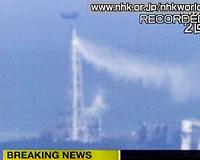| . |  |
. |
Tokyo (UPI) May 3, 2011 In the wake of Japan's nuclear crisis, fears are mounting that disaster could also strike the country's Hamaoka Nuclear Power Plant. "The Hamaoka plant is potentially even more dangerous than Fukushima," Mizuho Fukushima, leader of the Social Democratic Party of Japan, was quoted by The Christian Science Monitor newspaper as saying. Situated on the Pacific coast in Omaezaki, about 112 miles southwest of Tokyo, Hamaoka is in an area where a magnitude-8 earthquake is strongly projected to hit. "It should be closed down now," Fukushima said. "Scientists say the region in which Hamaoka is located is due for a major earthquake. If we wait until that happens, it will be too late." While operator Chubu Electric says the plant is capable of withstanding an 8.5-magnitude earthquake and a 26-foot tsunami, those specifications would clearly be inadequate to handle the 9-magnitude earthquake and 30-foot tsunami of March 11 that crippled Japan's Fukushima nuclear power plant. Hamaoka's two oldest reactors, Nos. 1 and 2, were decommissioned in 2009 because they were too old to justify costly safety upgrades, Chubu says. Reactors Nos. 4 and 5 nuclear reactors are in operation. The No. 3 reactor had been shut down earlier for a regular inspection and was due to restart in April but Chubu opted for a provisional delay after the March 11 earthquake, citing "a sharp decline in public faith in the safety of nuclear plants." The company aims to restart No. 3 in July, despite concerns about the plant's safety. Japan's Nuclear and Industrial Safety Agency said last week it hadn't made a decision on resuming operations for the No. 3 reactor. But Katsuhiko Ishibashi, professor emeritus of seismology at Kobe University said a restart of the No. 3 reactor was "out of the question" until Chubu had fully implemented emergency steps, reports Asahi Shimbun, a nationwide Japanese newspaper. "It is the world's most dangerous nuclear power plant. All its reactors should have been shut down," he said, warning that the ground on which it sits could rise 10-20 feet if struck by an earthquake. Warning against the restarting of reactor No. 3, an editorial last week in the Tokyo Shimbun said, "Simulations show that the radiation would reach Tokyo in half a day if disaster were to strike. Chubu Electricity says it is ready for emergencies. But it's far from being secure."
Share This Article With Planet Earth
Related Links Bringing Order To A World Of Disasters A world of storm and tempest When the Earth Quakes
 Japan eyes $49 bn nuclear compensation: report
Japan eyes $49 bn nuclear compensation: reportTokyo (AFP) May 3, 2011 The Japanese government has estimated that compensation for damages resulting from the country's nuclear crisis could reach four trillion yen ($49 billion), a report said Tuesday. Half the money will come from Tokyo Electric Power Co (TEPCO), the operator of the crippled Fukushima Daiichi power plant, with the rest coming from other electricity companies, the Asahi Shimbun said, without citi ... read more |
|
| The content herein, unless otherwise known to be public domain, are Copyright 1995-2010 - SpaceDaily. AFP and UPI Wire Stories are copyright Agence France-Presse and United Press International. ESA Portal Reports are copyright European Space Agency. All NASA sourced material is public domain. Additional copyrights may apply in whole or part to other bona fide parties. Advertising does not imply endorsement,agreement or approval of any opinions, statements or information provided by SpaceDaily on any Web page published or hosted by SpaceDaily. Privacy Statement |